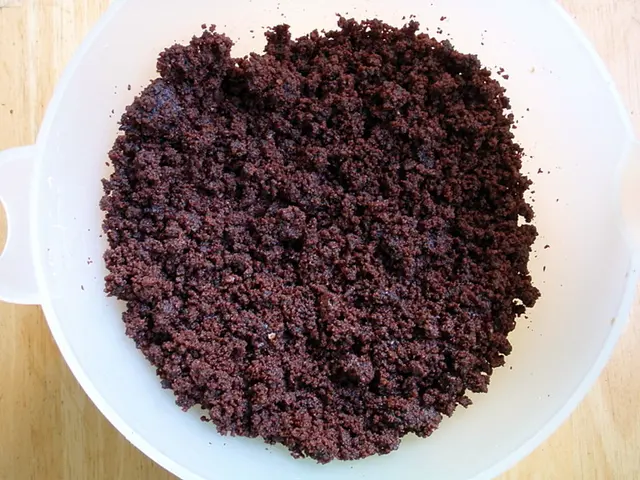A Different Take on Desmodium Gangeticum: The Shalpani Plant
Gangetic Desmodium Plant Discovered or Identified
Discover the remarkable Desmodium Gangeticum, popularly known as Shalpani, a therapeutic powerhouse rooted in Indian and Southeast Asian soil. This plant thrives in subtropical habitats, from grasslands to forest edges.
A Peek into Its Past
- Traditional Medicine: For centuries, Shalpani has been a staple in Ayurvedic, Siddha, and other traditional medicinal systems, especially for treating febrile conditions, respiratory ailments, and nervous disorders.
- Ayurvedic Significance: In Ayurveda, Shalpani is celebrated as a Rasayana herb, promoting longevity, rejuvenation, and overall health. It is often utilized in formulations to bolster immunity and vitality.
Historical Applications
- Ancient Texts: Shalpani is referenced in ancient Indian texts such as the Charaka Samhita and Sushruta Samhita as an essential medicinal plant.
- Ethnobotanical Uses: This plant has been employed by various indigenous communities for its antipyretic, anti-inflammatory, and analgesic properties.
Modern Medicine's Perspective
- Pharmacological Properties: Shalpani boasts anti-inflammatory, antipyretic, analgesic, neurine-tonic, and immunomodulatory properties.
Clinical Applications
- Fever: Effective in treating various types of fever, particularly intermittent and remittent fevers.
- Headache: Offers relief from headaches linked to meningitis and neuralgia.
- Meningitis: Makes a difference in the treatment of cerebro-spinal meningitis.
- Neuralgia: Aids in alleviating sharp nerve pain throughout the body.
Unique Characteristics
- Febrifuge: This plant lowers fevers.
- Analgesic: It relieves pain.
- Anti-inflammatory: It reduces inflammation.
- Nervine: Calms the nervous system.
Detailed Organ System Symptoms
HEAD
- Cerebro-spinal Meningitis: Inflammation in the brain and spinal cord membranes, causing a severe headache and neck stiffness.
- Headache: A throbbing headache, typically accompanied by meningitis or neuralgia.
PAIN
- Neuralgic Pain: Severe, sharp pain along the course of a nerve.
- Spinal Pain: Intense pain along the spine, making it difficult to sit properly.
- Burning Sensation: A burning sensation in hands and feet, usually coupled with hot flashes on the face.
SENSORIUM
- Sleeplessness: Inability to sleep.
- Comatose Sleep: Deep, unconscious sleep.
FEVER
- Intermittent or Remittent Fever: Fever that recurs or fluctuates.
- Symptoms: The fever usually appears at 7 A.M., lasting for 2-3 hours, and includes shivering, burning sensations, sudden hot flashes, and a reduction in fever with perspiration.
POTENCY OF CHOICE
- Mother Tincture: Ideal for acute conditions.
- Potencies: Levels of 3x, 6x, 30 are effective for chronic conditions and specific symptoms.
Frequently Asked Questions
What conditions can Shalpani treat?
- Shalpani is used for treating fevers, headaches, meningitis, neuralgic pain, and inflammation.
How does Shalpani help with fever?
- Itacts as a febrifuge, reducing fever and alleviating associated symptoms like chills, burning sensations, and hot flashes.
What is the recommended dosage for acute meningitis?
*For acute meningitis, the mother tincture is recommended.* For chronic conditions,potencies of 3x, 6x, and 30 are effective.
Are there any side effects of using Shalpani?
- Generally, it is well-tolerated, but excessive use may cause gastrointestinal discomfort or allergic reactions in some individuals.
A Quick Look into Its Other Uses
Desmodium gangeticum is also noted for its potential benefits in treating gynecological ailments due to its immunomodulatory, anti-inflammatory, and neurine-tonic properties.[2]
More research is needed to confirm its effectiveness in these areas.
[1] "https://www.jiet.in/article.asp?issn=0972-1321;year=2017;volume=11;issue=2;spage=1020;epage=1022;aulast=Tripathi"
[2] "https://pubs.acs.org/doi/abs/10.1021/jf050704d"
[3] "https://www.ncbi.nlm.nih.gov/pmc/articles/PMC5864266/"
This overview provides an insightful exploration of Shalpani, its therapeutic properties, applications, and recommended usage. Reach out if you need more information!
- Shalpani, with its roots in Indian and Southeast Asian soil, is renowned for its roles in traditional medicinal systems, addressing febrile conditions, respiratory ailments, and nervous disorders.
- In Ayurveda, Shalpani, known as a Rasayana herb, promotes longevity, rejuvenation, and overall health, often used in formulations to bolster immunity and vitality.
- This plant is referenced in ancient Indian texts like the Charaka Samhita and Sushruta Samhita, highlighting its significance as a medicinal plant.
- Beyond tradition, modern medicine acknowledges Shalpani's anti-inflammatory, antipyretic, analgesic, neurine-tonic, and immunomodulatory properties.
- Shalpani is effective in treating various types of fever, particularly intermittent and remittent fevers.
- It offers relief from headaches linked to meningitis and neuralgia, while making a difference in the treatment of cerebro-spinal meningitis.
- Shalpani aids in alleviating sharp nerve pain throughout the body, and relief from a throbbing headache, typically associated with meningitis or neuralgia.
- This plant exhibits febrifuge properties, lowering fevers, as well as analgesic properties, relieving pain, and anti-inflammatory properties, reducing inflammation.
- It calms the nervous system (nervine), and treats sensoriym disorders like sleeplessness and comatose sleep.
- Shalpani's mother tincture is ideal for acute conditions, while potencies of 3x, 6x, and 30 are effective for chronic conditions and specific symptoms.
- The plant may also benefit gynecological health due to its immunomodulatory, anti-inflammatory, and neurine-tonic properties, but more research is required to confirm its effectiveness in these areas.
- Despite its beneficial properties, excessive use may cause gastrointestinal discomfort or allergic reactions in some individuals.








